New Jersey Butterfly Club
A chapter of the North American Butterfly Association (NABA)
Hessel's Hairstreak
Callophrys hesseli
Identification: Tiny—barely larger than Eastern Tailed-Blue. Almost never seen with wings open. Below: FW and HW bright green or blue-green with white postmedian lines bordered with brown patches on both sides. Topmost white mark in FW postmedian band is displaced outwardly. Similar hairstreaks: Juniper Hairstreak is green rather than blue-green, the postmedian lines are bordered by brown only on the inner side, and the top spots in the postmedian bands are not displaced. Hessel's is generally confined to the immediate vicinity of cedar swamps.
NJ Status and Distribution: Classified as Special Concern in NJ. Resident. Occurs only from Burlington and Ocean counties south.
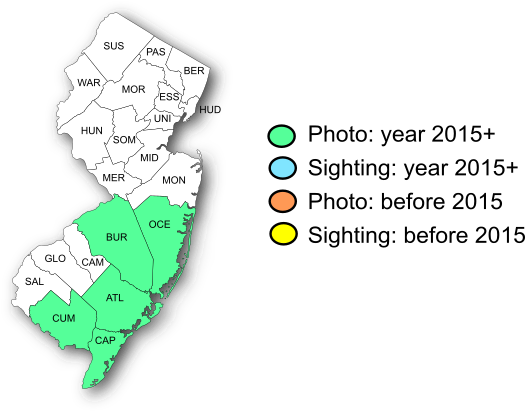
Habitat: Atlantic White-cedar swamps.
Flight Period: Mainly one brood—mid-April to late May. Some years there is a small second brood in July. Extreme dates: 4/4—7/19.
Caterpillar Food Plants: Atlantic White-cedar (Chamaecyparis thyoides).
Overwintering Stage: Pupa.
Good Locations: Wharton SF, Bass River SF, Penn SF, Belleplain SF, TNC Oswego River Preserve, Estell Manor Rd. (Cumberland Co.).
Comments: Generally seen only when nectaring on shrubs such as Sand Myrtle (Leiophyllum buxifolium), Leatherleaf (Chamaedaphne calyculata), and highbush blueberries (Vaccinium) along and near cedar-swamp edges. Summer brood may nectar on Coastal Sweetpepperbush (Clethra alnifolia).
It is highly unlikely that one would see both green hairstreaks together, as Juniper is found in dry habitats near stands of Eastern Redcedar, whereas Hessel's occurs in close association with wetlands dominated by Atlantic White-cedar.
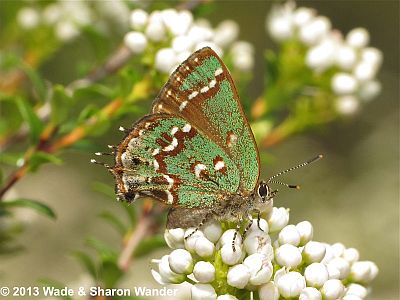
Woodland Twp., Burlington Co., NJ, 5/7/11, on Sand Myrtle.
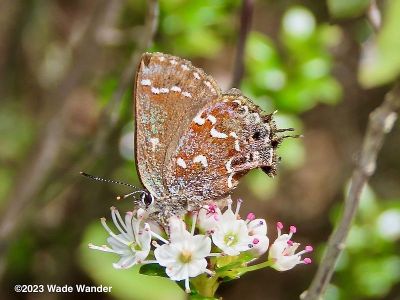
With a little wear, a Hessel’s can lose much of its beautiful green color! Woodland Twp. Burlington Co., NJ, 5/5/2023, on Sand Myrtle.
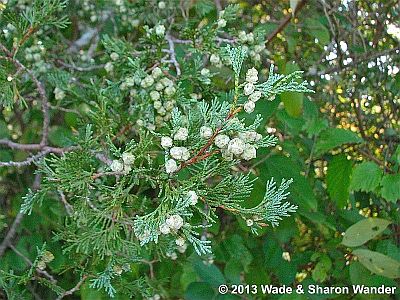
Atlantic White Cedar (Chamaecyparis thyoides) is the only known host plant for Hessel's Hairstreak.
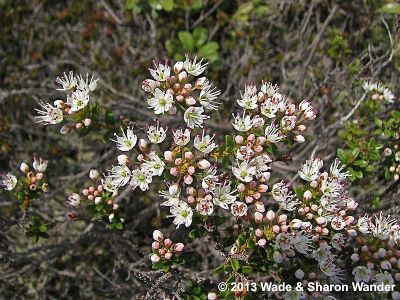
Sand Myrtle (Leiophyllum buxifolium) is a small, spring flowering, shrub of the Pine Barrens. It is the primary source of nectar for Hessel's Hairstreaks.